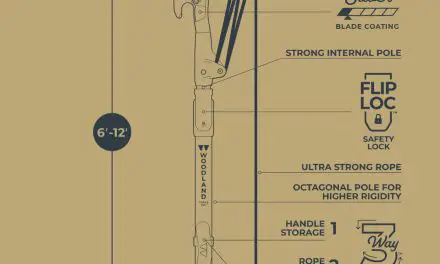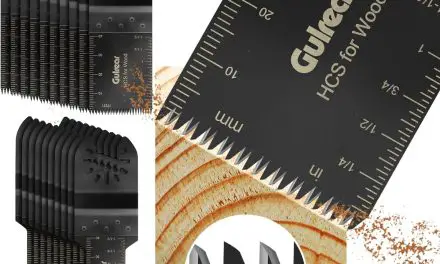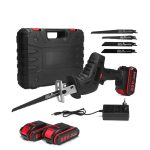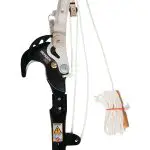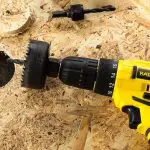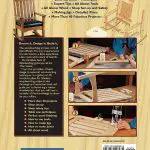To get into woodworking, start by acquiring basic tools like a saw, chisel, and mallet, then practice foundational skills like measuring, cutting, and sanding. Additionally, explore online tutorials or join woodworking classes to learn techniques and build your knowledge.
Emphasizing safety is crucial, so always wear protective gear and work in a well-ventilated area.
The Basics Of Woodworking
Looking to get started in woodworking? Learn the basics of this craft and explore the skills, tools, and techniques needed to create beautiful woodwork projects. Discover how to acquire the knowledge and experience necessary to embark on your woodworking journey.
Woodworking is a fascinating hobby that allows you to create beautiful and functional items with your own hands. Whether you’re a beginner or have some experience with woodworking, getting started can sometimes feel overwhelming. That’s why in this section, we’ll cover the basics of woodworking, focusing on essential tools, setting up your workspace, and choosing the right wood materials.
Essential Woodworking Tools:
- A workbench: A sturdy workbench is the foundation of any woodworking project. It provides a stable and level surface for cutting, sanding, and assembling pieces.
- A circular saw: A circular saw power tool is useful for making straight cuts in wood. It’s portable and easy to handle, making it a must-have for any woodworker.
- A router: With a router, you can create intricate designs, decorative edges, and joints. It’s an essential tool for adding a professional finish to your woodworking projects.
- A drill: No woodworking toolbox is complete without a drill. It allows you to create holes for screws, dowels, and other fasteners, making it an indispensable tool for assembling and attaching wood pieces.
- Chisels: Chisels come in various shapes and sizes and are used for carving, shaping, and removing excess material from wood.
- A random orbital sander: Sanding is a crucial step in woodworking, and a random orbital sander will make the process faster and easier. It’s designed to provide a smooth and even finish on wood surfaces.
- A clamping system: Clamps are essential for holding wood pieces together while glue sets or for securing materials in place during cutting or shaping.
- Safety equipment: Safety should always come first. Make sure you have safety glasses, hearing protection, and dust masks to protect yourself from potential hazards.
Setting Up Your Workspace:
- Find a dedicated space: Look for an area in your home or garage where you can set up a workshop. It should be well-ventilated, have good lighting, and enough space to accommodate your tools and materials.
- Organize your tools: Having a system in place to keep your tools organized will save you time and frustration. Use toolboxes, shelves, or pegboards to store and display your tools for easy access.
- Workbench layout: Arrange your workbench to optimize efficiency. Keep frequently used tools within arm’s reach and arrange your workspace so that you have enough room to maneuver and work comfortably.
- Safety precautions: Ensure your workspace is safe and free from clutter. Keep the floor clean, pay attention to electrical hazards, and always store sharp tools securely when not in use.
Choosing The Right Wood Materials:
- Softwood vs. Hardwood: Softwoods, such as pine and cedar, are easier to work with and are often used for construction projects. Hardwoods, such as oak and maple, are more durable and suitable for furniture and decorative items.
- Grain pattern: Consider the grain pattern of the wood. The direction and arrangement of the wood’s fibers affect its appearance and its behavior when cut or shaped.
- Moisture content: Wood absorbs and releases moisture, which can cause it to expand or contract. Ensure that the wood you choose has the appropriate moisture content for your project to avoid warping or cracking.
- Budget: Wood prices vary depending on the type and quality. Consider your budget when choosing wood materials for your projects.
With the basics of woodworking covered, you’re now equipped to start your woodworking journey. Remember to practice patience, take safety precautions, and enjoy the process of transforming raw materials into beautiful and functional woodwork. Happy woodworking!
Learning The Different Woodworking Joints
Learn the various woodworking joints that are essential for getting into woodworking. Gain the knowledge and skills needed to create strong and beautiful wood pieces through understanding and practicing these different joints.
Butt Joint
A butt joint is the simplest and most basic type of woodworking joint. It involves joining two pieces of wood together by simply butting them against each other. Here are a few key points to know about the butt joint:
- It is easy to create and does not require any special tools or expensive equipment.
- The joint relies solely on glue, screws, or nails to hold the pieces together.
- While it is a quick and straightforward joint, it is not the strongest option, and additional reinforcement may be necessary for certain projects.
- It is commonly used for simple, non-structural woodworking projects, such as picture frames or small boxes.
Dovetail Joint
The dovetail joint is known for its strength and beauty. It is a more advanced woodworking joint that requires precision and skill. Here are some important details about the dovetail joint:
- It involves creating interlocking wedge-shaped tails on one piece of wood and corresponding sockets on the other piece.
- The joint is known for its exceptional strength and resistance to pulling apart.
- It is commonly used in cabinetry, drawer construction, and high-quality furniture.
- The dovetail joint adds a distinctive aesthetic appeal to woodworking projects.
Mortise And Tenon Joint
The mortise and tenon joint is one of the oldest and strongest woodworking joints. It involves joining two pieces of wood by inserting a projection (tenon) from one piece into a hole (mortise) on the other piece. Consider the following points about this joint:
- It provides excellent structural integrity and can withstand heavy loads and stress.
- The joint is versatile and can be used in various woodworking applications, including furniture, doors, and frames.
- There are different variations of this joint, such as through, blind, and housed mortise and tenon.
- Proper fitting and precise cutting are crucial to achieve a strong and tight joint.
Rabbet Joint
The rabbet joint is a simple yet effective woodworking joint that involves creating a groove or recess along the edge of one piece of wood to fit the corresponding edge of another piece. Here are a few important details about the rabbet joint:
- It provides a strong and flush alignment between two pieces, making it ideal for joining frames, boxes, and cabinets.
- The joint is commonly used for inset doors or drawers, providing a clean and seamless appearance.
- It can be reinforced with glue, nails, or screws for added strength.
- The rabbet joint is relatively easy to make and requires basic woodworking tools.
Mitre Joint
The miter joint is commonly used for creating clean, seamless angles in woodworking projects. It involves joining two pieces of wood at a 45-degree angle. Consider the following key points about the miter joint:
- It is often used for creating frames, architectural trim, and picture frames.
- The joint can be strengthened with nails, splines, or biscuits.
- Precision and accurate measuring are essential for a seamless fit.
- The miter joint adds a touch of elegance and professionalism to woodworking projects.
Remember, learning the various woodworking joints opens up a world of possibilities for your projects. Practice and perfection of these joints will enhance your woodworking skills and allow you to tackle more complex and rewarding projects.
Mastering Woodworking Cutting Techniques
Learn how to get started with woodworking by mastering essential cutting techniques. Discover effective tips and tricks to enhance your woodworking skills in this comprehensive guide.
Woodworking requires a variety of cutting techniques to shape and manipulate wood. Becoming proficient in these techniques is essential for any aspiring woodworker. In this section, we will explore three fundamental cutting techniques: cross-cutting, ripping, and mitering. Each technique serves a different purpose and offers unique challenges.
Let’s dive in and master these woodworking cutting techniques.
Cross-Cutting:
Cross-cutting involves making cuts perpendicular to the grain of the wood. This technique is commonly used for cross-sectional cuts or resizing lumber to specific lengths. Here are some points to keep in mind when cross-cutting:
- Use a sharp crosscut saw or a miter saw for precise cuts.
- Measure and mark the cut line accurately to ensure desired lengths.
- Secure the wood using clamps or a workbench to prevent movement during cutting.
- Employ proper safety precautions such as wearing safety goggles and ensuring a stable working surface.
Ripping:
Ripping refers to cutting wood parallel to the grain. This technique is frequently used to create wide boards, strips, or to remove uneven edges. To master ripping, consider the following:
- Utilize a rip saw or a table saw equipped with a rip fence for straight and accurate cuts.
- Measure and mark the board to determine the desired width.
- Adjust the rip fence to ensure the correct width of the cut.
- Feed the wood steadily and avoid forcing it through the blade.
- Remember to wear appropriate safety gear, including push sticks for stability and protection.
Mitering:
Mitering involves creating angled cuts, typically at 45 degrees, to join two pieces of wood together at a corner. This technique is commonly used in applications such as making frames or building furniture. Here are some key points to consider when mitering:
- Use a miter saw or a miter box with a backsaw to achieve precise and clean cuts.
- Measure and mark the correct angle for the desired corner joint.
- Secure the wood firmly to prevent any movement during cutting.
- Take the time to accurately align the markings with the saw blade for precise cuts.
- Practice patience and ensure the angles match for a seamless joint.
Mastering these cutting techniques will pave the way for a successful woodworking journey. Remember to always prioritize safety and practice your skills regularly to improve your craftsmanship. Happy woodworking!
Honing Your Woodworking Skills With Simple Projects
Learn how to get into woodworking and improve your skills with simple projects. Enhance your craft by honing your woodworking abilities through hands-on experience.
Woodworking is a wonderful hobby that allows you to harness your creativity and create beautiful and functional pieces from wood. If you’re new to woodworking and looking to hone your skills, starting with simple projects is a great way to build confidence and progress in your craft.
In this section, we will explore two simple woodworking projects that are perfect for beginners: building a wooden picture frame and constructing a basic bookshelf.
Building A Wooden Picture Frame:
- Begin by selecting a piece of wood that suits your preferences in terms of color, grain, and thickness.
- Measure and mark the dimensions for your picture frame on the wood using a ruler or measuring tape.
- Use a miter saw or a hand saw with a miter box to cut the wood to the desired dimensions at 45-degree angles.
- Sand the cut edges of the wood to ensure a smooth finish.
- Apply wood glue along the mitered edges and join the corners of the frame together.
- Secure the corners with clamps and allow the glue to dry completely.
- Once the glue has dried, sand the entire frame to ensure a uniform and smooth surface.
- Apply a wood finish or paint of your choice to protect the wood and enhance its appearance.
- Attach a picture hanging hardware or a sawtooth hanger to the back of the frame, and your wooden picture frame is ready to display your favorite moments!
Constructing A Basic Bookshelf:
- Choose the type of wood you would like to use for your bookshelf. Pine or plywood are popular options for beginners.
- Measure and mark the dimensions for the bookshelf, taking into consideration the height, width, and depth you desire.
- Cut the wood pieces to the appropriate dimensions using a circular saw or a table saw.
- Sand all the cut edges and surfaces of the wood to ensure a smooth finish.
- Attach the sides, top, and bottom pieces together using wood screws or dowels for added stability.
- Install adjustable shelf supports on the inside of the bookshelf, at your desired intervals, to accommodate different book sizes.
- Cut and place the shelves onto the supports, ensuring they fit snugly.
- Sand the entire bookshelf to remove any rough edges or imperfections.
- Apply a wood finish or paint of your choice to protect the wood and give your bookshelf a polished look.
- Position your bookshelf in your desired location and start organizing your books!
With these simple woodworking projects, you can develop your skills while creating useful and attractive pieces for your home or as gifts. Remember to take your time, work safely, and enjoy the process of bringing your woodworking creations to life.
Happy woodworking!
Exploring Advanced Woodworking Tools
Discover the world of woodworking with our guide to advanced woodworking tools. Learn how to get started and master the craft of woodworking using the right tools for the job.
Woodworking is a craft that offers endless opportunities for creativity and personal fulfillment. If you’re ready to take your woodworking skills to the next level, it’s time to explore some advanced woodworking tools. These tools are designed to provide greater precision, efficiency, and versatility in your woodworking projects.
In this section, we will delve into three essential advanced woodworking tools: the Router, Table Saw, Planer, and Jointer.
Router:
- A router is a versatile power tool that can be used to hollow out an area in the face of a piece of wood, create intricate decorative details, or to form grooves and edges.
- With its various router bits, you can achieve different cuts and profiles, such as chamfers, cove moldings, and dadoes.
- This tool is a must-have for any woodworker looking to add detail and finesse to their projects.
Table Saw:
- The table saw is the centerpiece of most woodworking shops. It consists of a circular blade mounted on an arbor that extends through a tabletop.
- This woodworking tool is primarily used for making straight cuts in various types of wood.
- With the ability to adjust the blade height and angle, a table saw allows woodworkers to create precise cuts for various joinery techniques, such as rip cuts, crosscuts, and bevel cuts.
Planer:
- A planer is a woodworking tool used to remove thickness and surface imperfections from rough lumber or to create consistently dimensioned stock.
- Bypassing the wood through the planer, it smooths the surface and ensures all sides are parallel.
- Using a planer enables woodworkers to achieve uniform thickness throughout their projects, resulting in better-fitting joints and finished pieces.
Jointer:
- The jointer is a machine commonly used alongside a planer to refine and straighten the edges of lumber.
- It is particularly useful for producing boards with perfectly flat, straight faces and squared edges, which are crucial for creating strong and seamless joinery.
- A jointer’s cutting head rotates at high speeds and features multiple knives that remove small amounts of material to achieve a smooth, straight surface.
As you expand your woodworking skills, these advanced tools will become invaluable allies in your pursuit of precision and craftsmanship. With the ability to execute intricate details, achieve precise cuts, create consistent thickness, and produce straight edges, the router, table saw, planer, and jointer are essential additions to any woodworking arsenal.
Explore each tool’s capabilities and unleash your creativity to bring your woodworking projects to new heights. Happy woodworking!
Wearing The Right Protective Gear
One crucial aspect of getting into woodworking is wearing the appropriate protective gear for your safety. Make sure to invest in goggles, ear protection, gloves, and a dust mask to prevent any potential injuries.
Woodworking can be a fulfilling and creative hobby, but it’s important to prioritize safety when diving into this craft. Wearing the appropriate protective gear can help prevent accidents and keep you safe while working with tools and materials. Here are some essential pieces of protective gear to consider:
Safety Glasses:
- Your eyes are vulnerable during woodworking projects, as flying debris, wood chips, or even small particles can cause severe eye injuries. Investing in a quality pair of safety glasses will help protect your eyes from potential harm.
- Safety glasses should provide wrap-around protection to shield your eyes from all angles and have impact-resistant lenses.
- Make sure the glasses fit properly and are comfortable to wear.
Dust Mask:
- Woodworking often involves the production of dust, which can be harmful if inhaled. Wearing a dust mask can help filter out harmful particles and protect your respiratory system.
- Look for a dust mask that is certified to filter out both large and small particles, such as those with N95 or N99 ratings.
- Ensure that the dust mask fits securely and comfortably, creating a seal around your nose and mouth.
Hearing Protection:
- Woodworking can generate significant noise, especially when using power tools. Protecting your hearing is crucial to prevent long-term damage.
- Wear earmuffs or earplugs designed specifically for woodworking to reduce the noise level to a safe range.
- Look for hearing protection with a high noise reduction rating (NRR) for optimal effectiveness.
Remember, wearing the right protective gear is non-negotiable when it comes to woodworking. Prioritize your safety by investing in safety glasses, a dust mask, and hearing protection. These simple precautions can make a significant difference in preventing accidents and maintaining your long-term health.
Happy woodworking!
Following Safety Guidelines In The Workshop
Learn how to get into woodworking safely by following these guidelines in the workshop. Ensure your sentences are concise and engaging, using a variety of phrases to keep the reader interested. Stay SEO-friendly and write in an easy-to-understand, human-like manner.
Woodworking can be a highly rewarding and fulfilling hobby or profession, but it is essential to prioritize safety in the workshop. By following proper safety guidelines, you can minimize the risk of accidents and injuries. Here are some key areas to focus on:
Proper Handling Of Tools
When it comes to woodworking, proper handling of tools is crucial for both efficiency and safety. Here are some guidelines to keep in mind:
- Always wear appropriate personal protective equipment, such as safety glasses, gloves, and hearing protection, when using tools.
- Familiarize yourself with each tool’s functions, instructions, and safety features before using them.
- Keep your tools clean, sharp, and well-maintained for optimal performance.
- Use the right tool for the job and avoid using damaged or faulty tools.
- Secure the workpiece properly to prevent it from moving or slipping during operation.
- Maintain a firm grip on the tool and avoid distractions while using it.
- Always use tools in a well-lit workspace to enhance visibility and prevent accidents.
Ensuring Proper Ventilation
Woodworking involves working with various materials and substances, including wood dust and finishes, which can pose health risks if not properly managed. Consider the following ventilation guidelines for a safer working environment:
- Ensure that your workshop has adequate ventilation to minimize the accumulation of airborne dust and fumes.
- Use dust collection systems or wear a respirator to reduce exposure to wood dust.
- Avoid working with finishes that contain harmful chemicals in poorly ventilated areas.
- If necessary, use air filtration units or fans to improve air quality in the workshop.
- Regularly clean your tools, equipment, and work area to minimize dust buildup.
Remember that safety should always be your top priority when engaging in woodworking activities. By following proper safety guidelines, you can enjoy the craft with confidence while minimizing the risk of accidents or health hazards.
Joining A Woodworking Community Or Workshop
Discover the world of woodworking by joining a thriving community or workshop. Gain valuable knowledge and practical skills from experienced woodworkers to kickstart your woodworking journey. Explore a supportive environment that fosters creativity, collaboration, and passion for woodworking.
Woodworking is a fascinating hobby that allows you to unleash your creativity and create beautiful, functional objects with your own hands. Whether you’re a complete beginner or have some experience, joining a woodworking community or workshop can greatly enhance your skills and provide you with a supportive and inspiring environment.
In this section, we will explore the benefits of joining a woodworking group and learning from experienced woodworkers.
Benefits Of Joining A Woodworking Group:
- Access to Varied Expertise: Being part of a woodworking community or workshop opens up opportunities to learn from seasoned woodworkers with a wealth of knowledge. They can provide guidance, share tips and tricks, and help you troubleshoot any challenges you may encounter in your woodworking journey.
- Networking and Inspiration: Surrounding yourself with like-minded individuals who share your passion for woodworking can be incredibly valuable. Interacting with fellow enthusiasts and professionals can spark new ideas, inspire your creativity, and broaden your perspective on woodworking techniques and trends.
- Learning from Experienced Woodworkers: One of the greatest advantages of joining a woodworking group is the opportunity to learn directly from experienced woodworkers. They can teach you various woodworking techniques, lend their expertise on tool usage and safety, and guide you through the process of planning and executing projects.
- Collaborative Projects and Feedback: Working alongside others in a woodworking community or workshop allows you to engage in collaborative projects. This can foster a sense of camaraderie and provide valuable insights into different approaches and design aesthetics. Additionally, receiving constructive feedback from fellow woodworkers can help you improve your skills and refine your craftsmanship.
- Access to Specialized Tools and Resources: Woodworking communities often have well-equipped workshops with a wide range of specialized tools and equipment. This eliminates the need for you to invest in expensive machinery initially, allowing you to experiment with different tools and techniques before deciding on your personal preferences.
- Accountability and Motivation: Being part of a woodworking group creates a sense of accountability as you set goals and share your progress with others. This can be a powerful motivator to stay committed and consistently work on improving your woodworking skills.
Joining a woodworking community or workshop not only offers a space for you to learn and grow but also provides a supportive environment where you can connect with fellow enthusiasts and share your passion for woodworking. Embrace the opportunity to learn from experienced woodworkers, collaborate on projects, and expand your knowledge of this timeless craft.
Selling Your Woodworking Creations
Discover how to get started in woodworking by selling your unique creations. Learn essential tips, techniques, and resources to launch your woodworking business successfully. Unleash your creativity and turn your passion for woodworking into a lucrative venture.
Woodworking is not just a hobby; it can also be a lucrative venture. If you’ve honed your woodworking skills and produce beautiful creations, why not consider selling them? Finding the right marketplaces and pricing your woodwork appropriately are essential steps in making your woodworking business a success.
In this section, we’ll explore these aspects in detail.
Finding The Right Marketplaces
To sell your woodworking creations, you need to find the right marketplaces that attract your target audience. Here are some options to consider:
- Craft Fairs: Participating in craft fairs allows you to showcase your woodwork directly to potential buyers. These events often draw crowds interested in unique and handmade items.
- Online Marketplaces: Utilize popular online platforms like Etsy, eBay, or Amazon Handmade to reach a wide customer base. These marketplaces provide a convenient way to showcase and sell your woodwork globally.
- Local Retail Stores: Approach local furniture stores, home decor boutiques, or galleries that may be interested in selling your woodwork on consignment. This allows you to display your creations in established retail settings.
- Social Media: Leverage social media platforms like Instagram, Facebook, or Pinterest to showcase your woodworking talent. Build a strong online presence by sharing high-quality images and engaging with potential customers.
Pricing Your Woodwork
Determining the right price for your woodwork is crucial. While you want to make a profit, it’s important to ensure your prices remain competitive and attractive to buyers. Consider the following factors when pricing your creations:
- Cost of Materials: Calculate the cost of the wood, tools, finishes, and any other materials used in creating the piece. Ensure that your pricing covers these expenses.
- Time and Labor: Factor in the hours you spend designing, cutting, shaping, and finishing each item. Assign a reasonable hourly rate for your expertise to compensate for your time and effort.
- Market Research: Look at similar woodwork pieces being sold in your chosen marketplaces. Consider the average pricing to determine where your creations fit in terms of quality and craftsmanship.
- Profit Margin: Determine the profit margin you want to achieve. This ensures that you not only cover costs but also generate income for your business.
Remember, pricing too high may deter potential buyers, while pricing too low may undervalue your creations. Striking the right balance is key.
With the right marketplaces and appropriate pricing, you’re well on your way to successfully selling your woodworking creations. Take the time to research market trends, engage with your target audience, and present your woodwork in the best possible light. Now, let’s dive into the next section where we explore the importance of effective marketing for your woodworking business.
Common Woodworking Problems And Solutions
Looking to get started in woodworking? Discover common woodworking problems and their solutions in this informative article. Learn how to overcome challenges and embark on your woodworking journey with confidence.
Whether you’re a beginner or a seasoned woodworker, you’re bound to encounter some challenges along the way. Fortunately, there are solutions to common woodworking problems that can help you overcome these obstacles and achieve satisfying results. In this section, we will explore two common issues that woodworkers often face and provide effective solutions for dealing with them.
Dealing With Split Wood
Splitting wood can be frustrating, but it’s not an uncommon problem in woodworking. Here are some tips to help you deal with split wood effectively:
- Preventive measures: To minimize splitting, it’s essential to choose the right type of wood for your project. Some woods, like oak and maple, are less prone to splitting than others. Additionally, make sure to use a sharp blade or tool when cutting the wood, as dull tools can cause more splitting.
- Strategic cutting: When cutting the wood, pay attention to the direction of the grain. Cutting across the grain can increase the likelihood of splitting. Instead, try cutting parallel to the grain or at an angle to reduce the risk of splitting.
- Using wood glue: If you do encounter split wood, you can often repair it by applying wood glue into the split and clamping the piece together until the glue dries. This method is most effective for smaller splits.
Repairing Gaps And Cracks
Gaps and cracks can occur in woodwork for various reasons, such as changes in humidity or improper joinery. Here are some solutions to help you repair gaps and cracks in your woodworking projects:
- Wood filler: Wood filler is a versatile product that can be used to fill small gaps and cracks in wood. Simply apply the wood filler into the gap or crack, smooth it out, and let it dry. Once dry, you can sand it down to achieve a seamless finish.
- Using wedges: For larger gaps, you can use wedges to fill the space. Cut a small piece of wood into a wedge shape and insert it into the gap. The wedge should be tight enough to fill the gap but not so tight that it causes further damage.
- Reinforcing with dowels: In cases where there are gaps or cracks near joints, reinforcing with dowels can help strengthen the joint and close the gap. Drill holes into both sides of the joint, insert dowels coated with wood glue, and clamp the pieces together until the glue sets.
Woodworking problems are inevitable, but with the right knowledge and solutions at hand, you can tackle these challenges with confidence. By implementing these tips for dealing with split wood and repairing gaps and cracks, you’ll be well-equipped to overcome common woodworking hurdles and achieve impressive results in your projects.
Must-Have Woodworking Books And Magazines
Discover the best woodworking books and magazines, essential for beginners looking to dive into the world of woodworking. These resources provide expert guidance and step-by-step instructions to help you master the craft and create stunning wooden projects.
Woodworking is a fulfilling hobby that allows you to tap into your creativity and create stunning pieces from scratch. Whether you’re a beginner or have some experience in the craft, having the right resources can greatly enhance your woodworking journey.
In this section, we’ll explore some must-have woodworking books and magazines that provide valuable insights, inspiration, and techniques to help you excel in the art of woodworking.
Popular Woodworking Magazines
- Popular Woodworking: This well-known woodworking magazine covers a wide range of topics, including project ideas, tool reviews, techniques, and profiles of renowned woodworkers. It’s a fantastic resource for both beginners and seasoned woodworkers looking for new ideas and inspiration.
- Fine Woodworking: With a focus on high-quality craftsmanship, Fine Woodworking offers in-depth articles, step-by-step project plans, and expert advice from experienced woodworkers. This magazine is a treasure trove of knowledge and inspiration for woodworkers of all skill levels.
- Woodcraft Magazine: Woodcraft Magazine caters to both woodworkers and DIY enthusiasts, offering a mix of project ideas, tool reviews, and instructional articles. It showcases a wide range of woodworking styles and techniques, making it a valuable resource for those seeking creative ideas and expert guidance.
Recommended Woodworking Books
- “The Complete Manual of Woodworking” by Albert Jackson and David Day: This comprehensive guide covers everything from basic woodworking techniques to advanced joinery methods. It provides clear explanations, detailed illustrations, and step-by-step instructions for various projects. It’s a valuable resource for beginners who want to build a strong foundation in woodworking.
- “Understanding Wood: A Craftsman’s Guide to Wood Technology” by R. Bruce Hoadley: To create outstanding woodworking projects, it’s crucial to have a deep understanding of wood and its properties. This book delves into the science behind wood, helping you make informed decisions when selecting and working with different wood types.
- “The Joint Book: The Complete Guide to Wood Joinery” by Terrie Noll: Joinery is a fundamental aspect of woodworking, and this book is an excellent reference for mastering various types of joints. It provides detailed explanations and visual guides for creating strong and aesthetically pleasing connections in your woodworking projects.
These woodworking books and magazines offer a wealth of knowledge, inspiration, and practical tips to enhance your woodworking skills and broaden your creative horizons. Whether you’re seeking project ideas, expert advice, or in-depth techniques, these resources are invaluable companions on your woodworking journey.
So, grab a copy, dive in, and let your passion for woodworking soar!
Online Woodworking Communities And Forums
Discover the world of woodworking through online communities and forums. Gain insights, tips, and guidance on how to get started in woodworking from experienced enthusiasts and professionals. Join these vibrant platforms to connect with like-minded individuals and explore the endless possibilities of this rewarding craft.
Engaging With The Woodworking Community
Woodworking is an art that can be both enjoyable and fulfilling. If you’re looking to get into woodworking, joining online woodworking communities and forums can be an excellent way to learn, share, and connect with fellow woodworkers. These communities provide a platform for beginners and seasoned woodworkers to engage, seek advice, and find inspiration.
Here’s how you can make the most out of these online woodworking communities:
- Seeking Advice from Experienced Woodworkers:
- Experienced woodworkers can provide valuable insights and guidance as you embark on your woodworking journey. They have a wealth of knowledge and experience that can help you avoid common pitfalls and improve your skills. Here’s how you can tap into their expertise:
- Post your questions: Don’t hesitate to ask any questions or seek advice from the community. Whether it’s about choosing the right tools, understanding specific techniques, or troubleshooting a woodworking problem, these forums are filled with knowledgeable individuals who are more than willing to lend a helping hand.
- Engage in discussions: Participate in ongoing discussions and share your thoughts and experiences. Joining conversations not only expands your knowledge but also helps build connections with fellow woodworkers.
- Attend virtual workshops or classes: Many online woodworking communities organize workshops or classes led by experienced woodworkers. These sessions provide a valuable opportunity to learn new techniques and gain hands-on experience.
Remember, the woodworking community is incredibly welcoming and supportive. Embrace the opportunity to learn from others, share your progress, and be an active part of the community. By engaging with the woodworking community online, you’ll open yourself up to a wealth of knowledge, inspiration, and camaraderie.
So why not dive in and start exploring these vibrant communities today?
Frequently Asked Questions On How To Get Into Woodworking?
How Do I Get Into Woodworking With No Experience?
To get into woodworking with no experience, start by learning the basics of woodworking tools and techniques. Research online tutorials, watch instructional videos, and read beginner-friendly books on woodworking. Next, invest in essential tools such as saws, chisels, and a workbench.
Start with small, simple projects like birdhouses or cutting boards to practice your skills. Join woodworking clubs or take a class to learn from experienced woodworkers and get hands-on guidance. Learn from your mistakes and keep practicing to improve your skills.
Be patient and don’t rush through projects—taking your time will yield better results. Prioritize safety by wearing protective gear and following safety guidelines. Embrace trial and error and enjoy the process of creating something with your own hands.
Can I Teach Myself Woodworking?
Yes, you can teach yourself woodworking. Start with basic tools like a saw, hammer, and chisel. Learn through online tutorials, books, and videos. Start with simple projects and gradually increase difficulty. Practice safety precautions and wear protective gear. Take your time and be patient with yourself.
Experiment and learn from your mistakes. Joining a woodworking community can be helpful for guidance and support. Eventually, you will develop skills and confidence. Remember, practice makes perfect in woodworking. So start today and enjoy the satisfaction of creating your own wooden masterpieces.
How Do I Start Being A Woodworker?
To start being a woodworker, you need to begin with the basics. First, gather essential tools like a saw, chisel, and measuring tape. Next, practice fundamental woodworking techniques such as cutting and shaping wood. You can learn these skills through online tutorials or join a woodworking class.
Additionally, having access to reference materials like books or videos can be helpful. Furthermore, starting with small projects can build your confidence and improve your skills over time. As you progress, explore various types of woodworking, such as furniture making or carpentry.
Remember to prioritize safety by wearing protective gear like safety glasses and hearing protection. Lastly, join a woodworking community to connect with experienced woodworkers and seek guidance when needed. With practice and patience, you can develop your woodworking skills and create beautiful pieces.
Is It Hard To Get Into Woodworking?
Getting into woodworking is not overly difficult. With the right tools and guidance, anyone can learn the craft. Woodworking requires patience and attention to detail. Learning different techniques can be challenging but also rewarding. It is important to start with simple projects and gradually advance to more complex ones.
Practicing regularly helps in improving skills and gaining confidence. Joining woodworking communities or taking classes can provide valuable insights and support. Investing time in understanding the basics and learning from mistakes is crucial. Woodworking offers a creative outlet and the satisfaction of creating something with your own hands.
So, while there may be a learning curve, with dedication and practice, anyone can become proficient in woodworking.
Conclusion
To embark on a woodworking journey, all it takes is a passion for craftsmanship and a willingness to learn. Whether you want to create intricate furniture or simply work with your hands, woodworking offers a gratifying outlet for creativity. Start by familiarizing yourself with essential tools and safety precautions.
Explore various techniques through online tutorials or join local woodworking communities for hands-on experience. Patience and perseverance are key as you hone your skills and grow your confidence in working with different types of wood. Don’t be afraid to make mistakes – they are opportunities for learning and improvement.
Remember to prioritize safety at all times and invest in quality tools. With time, practice, and dedication, you’ll soon find yourself creating beautiful pieces that showcase your craftsmanship. So, what are you waiting for? Grab your tools and let your woodworking journey begin!



